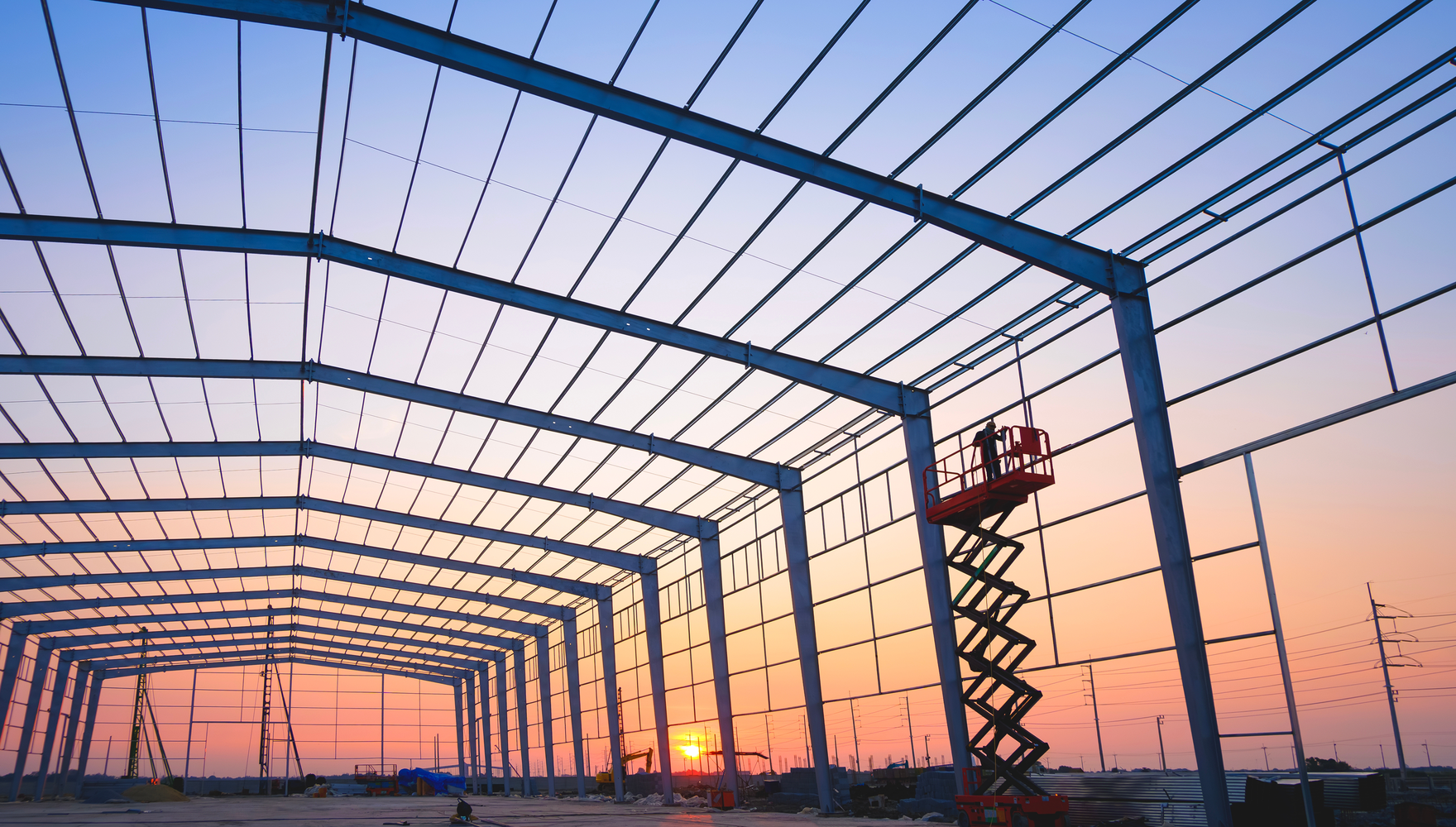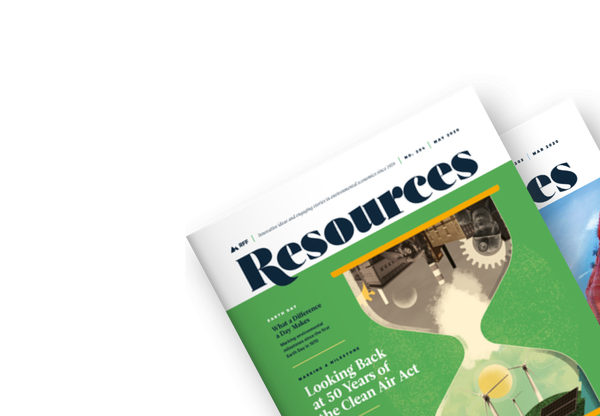In this week’s episode, host Daniel Raimi talks with Dave Foster, a distinguished associate at the Energy Futures Initiative, about the story of how labor unions and environmental organizations have found ways to work together on issues that affect both contingents. As a former director of United Steelworkers District 11, Foster recalls the “Donora incident” as the main catalyst for the union’s interest in environmental affairs. Foster shares his firsthand recollection of the history behind the creation of the BlueGreen Alliance, including some of the various struggles, wins, and early initiatives that helped secure the partnership between labor and environmental organizations.
Listen to the Podcast
Notable quotes:
- In 1948, an incident related to toxic pollution from a zinc smelter in Donora, Pennsylvania, had a dramatic impact on the United Steelworkers: “As a result, the steelworkers union became deeply committed to environmental issues, because these were their members in the plant who all lived in the community and who were impacted … [T]he United Steelworkers supported every major piece of environmental legislation after that.” (4:36)
- The BlueGreen Alliance launched its first Good Jobs, Green Jobs Conference in 2008 to instant success: “We were amazed when well over 1,000 people showed up, almost without expectation, and jammed the Hilton Hotel Ballroom to the rafters … By the end of the next year, we had 14 unions and environmental organizations with over 15 million members who had become the center of BlueGreen Alliance.” (17:04)
- Complete agreement among organizations is key to making progress: “I think that was the kind of spirit that we brought into managing the BlueGreen Alliance—that everybody had veto power, but we had to come to a solution.” (22:35)
Top of the Stack
- Sea of Grass: The Conquest, Ruin, and Redemption of Nature on the American Prairie by Dave Hage and Josephine Marcotty
- Power Lines: The Human Costs of American Energy in Transition by Sanya Carley and David Konisky
The Full Transcript
Daniel Raimi: Hello, and welcome to Resources Radio, a weekly podcast from Resources for the Future (RFF). I’m your host, Daniel Raimi. Today, we have a special episode featuring Dave Foster, a distinguished associate at the Energy Futures Initiative and a former director of United Steelworkers District 11. I’ve known Dave for several years, and he is, among many other things, a great storyteller.
In today’s episode, I’ll ask him to tell the story of how environmental organizations and labor unions came together to work on common goals. Specifically, Dave will tell us about the formation of the BlueGreen Alliance—an organization that advocates for the shared goals of workers and environmentalists. It’s a fascinating history, and there’s nobody better to tell the story than Dave. Stay with us.
Dave Foster, from the Energy Futures Initiative—formerly with the United Steelworkers, BlueGreen Alliance, and so many other past titles—it’s great to have you on the show. Welcome to Resources Radio.
Dave Foster: Thank you for having me, Dan.
Daniel Raimi: Dave, you’re new to the show, so we’d love for you to tell us a little bit about your personal journey—in particular, your history working at the intersection of environmental issues and labor unions.
Dave Foster: I grew up in a small town in southern Minnesota, and like a lot of people of my generation, I grew up outdoors. I didn’t grow up online; I grew up running around, doing a lot of fishing, camping, hiking, and all those kinds of things you do when you’re young and have too much energy.
Most importantly, what brought me into having a lot of respect for environmental issues were my parents, my grandfather, and then an uncle who was an ardent conservationist and who we visited often during the years.
Grant McConnell was personally responsible for the legislation that created the North Cascades National Park out in eastern Washington. We visited him and my aunt on multiple occasions. He taught me rock climbing; he taught me hiking and how to start a fire with sticks and no matches.
I had great respect for conservationism as a result of my upbringing. That’s what really always kept me alive when I went into the steel industry and worked for 15 years as a steelworker—I loved the outdoors. I happened to be in a state where the Steelworkers Union members were iron ore miners in the northern part of the state, and they loved the outdoors, too.
Daniel Raimi: Yeah. Such a beautiful part of the country for folks who haven’t been up north there. Dave, as you know, the idea for this episode came about because of some sad news, which was the passing of Leo Gerard, who was a cofounder of BlueGreen Alliance, or BGA, in 2006. But the story of BGA begins well before the 2000s.
This is a very hard question to ask someone, because I’m asking you to summarize an extremely long period of time and a complex history. But I’m wondering if you can maybe share some high points about areas where, in the run-up to the founding of BGA, environmental organizations and labor organizations either worked together or maybe butted heads from time to time.
Dave Foster: Many people think about a union like the United Steelworkers, and they think of manufacturing and of people who are isolated from environmental issues. What few people really realize is how deeply entrenched in the culture of the United Steelworkers’ respect and value for environmental issues really was.
This really was sparked by something known as the Donora incident, which took place in 1948 in the small town of Donora, Pennsylvania, in the Mon Valley outside of Pittsburgh. Donora was a place that had a zinc smelter, and employees were represented by the United Steelworkers. The Donora incident was a temperature inversion that trapped the toxic pollution from this smelter in the valley, resulted in the death of 20 people, and sent 6,000 people to the hospital.
This was very much something that had a dramatic impact on environmentalism in the United States generally, not just the United Steelworkers. But as a result, the Steelworkers Union became deeply committed to environmental issues, because these were their members in the plant who all lived in the community and who were impacted by this temperature inversion.
Going forward, the United Steelworkers supported every major piece of environmental legislation after that. They were one of the conveners of the first clean air conference in Washington, DC, in the 1950s—it was part of who this union was.
I remember when I started work in a steel mill in 1975, it was widely known that the average life expectancy of someone who worked 30 years in a steel mill was just two years upon retirement because of the environmental impacts of the air quality on the people who worked there.
The union always had a deep commitment to environmental issues. This, I think, is borne out by the fact that the United Steelworkers adopted a resolution at their convention in front of 3,000 delegates in 1990, identifying climate change as the most important environmental issue for our generation. That was long before climate change was recognized as an environmental priority by many environmental organizations in the United States. That’s why the USW, the United Steelworkers, was so deeply committed to trying to build solutions that involved the union.
Daniel Raimi: So fascinating, all that history. I’d love to ask you now specifically about BGA and how it came together. Can you tell us that story?
Dave Foster: Now that is a long and complicated story, deeply connected to what I would describe as the industrialization of America.
I went to work in the steel mill in 1975, back when the steel industry was the largest in the world—one of the most important sectors of the American economy. But throughout the 1980s, we began to see globalization and trade take jobs away from one of the primary sectors of the American economy. During that decade, I became convinced that labor unions needed allies, not enemies, in the fight to save unions and manufacturing jobs.
During that period of time, there certainly were fights over environmental regulations versus jobs as they were becoming more precarious. In fact, one of the most vicious ones actually happened in Minnesota over the tailings that were being dumped by an iron ore mining company, Reserve Mining, in Lake Superior. That resulted in a lot of legal conflicts, a lot of back and forth in politics, that I witnessed and became very concerned about over time. I became convinced that we could not save jobs in the United States without restructuring global trade agreements, and that we could not restructure those global trade agreements if we did not have allies.
All that thinking came to a head, in my experience, in the fall of 1998 when a company called Kaiser Aluminum—for which I was the lead negotiator for the Steelworkers—locked out 3,000 steelworker members in multiple states.
Kaiser Aluminum had just been purchased by someone named Charles Hurwitz, who was a notorious corporate raider—and who, a year or so earlier, had bought a company called Pacific Lumber located in California, which was an old-growth redwood lumber company.
Hurwitz ordered the clear-cutting of something known as the Headwaters Forest. That became a national environmental protest and created something known as “Redwood Summer” in Humboldt County, in which protesters from around the country engaged in sit-ins and a variety of other things to try to stop the clear-cutting.
All of a sudden, we had two of the primary fights going on in the United States for the labor and environmental movements, all focused on one parent company called MAXXAM Inc.—it was owned by one individual.
The Kaiser Aluminum lockout ended up being the largest illegal lockout of American workers in US labor history. It was my responsibility to try to figure out a solution for this, and so I developed a multipronged strategy with multiple environmental organizations to both stop the clear-cutting of Pacific Lumber and, at the same time, win the jobs back of the Kaiser Aluminum locked-out steelworkers.
This all came together a year into the lockout. In 1999 in Seattle, you might recall, was when the first World Trade Organization meeting was convened in the United States, and we were at the center of the organized protests against the way in which trade agreements were being structured in the United States. We mobilized thousands and thousands of labor and environmental activists. At the heart of them were the 2,000 steelworkers who participated from Kaiser Aluminum with a fundamental request that labor, environmental, and human rights standards be baked into trade agreements as a way of protecting American jobs and environmental standards.
It was out of that protest movement that I got to know someone named David Brower, who was a legendary leader of the environmental movement in the United States. He was the executive director of the Sierra Club when they saved the Grand Canyon, and he went on to found Friends of the Earth, an international environmental organization. At the time he and I met, he was the head of something called the Earth Island Institute, based in California.
David Brower was very focused on trying to end the clear-cutting of the redwood forests in Humboldt County. He and I cofounded something called the Alliance for Sustainable Jobs in the Environment (ASJE) to try to bring labor unions and environmental organizations together. The Alliance provided us with a model in the steelworkers union on how you build grassroots collaboration between labor and environmental activists. The ASJE, as it became known, lasted for many years, particularly on the West Coast. We hired a former congressional member from Indiana named Jim Jontz to run the organization for several years.
That was really the number-one step that led to forming, years later, the BlueGreen Alliance and the steelworkers’ understanding of the value of these kinds of collaborations. Incidentally, the Kaiser Aluminum lockout ended after two years, a terrific legal case that ended up in hundreds of millions of dollars of back pay and an entirely different model for labor relations—one of the most respectful companies you can find in America today in terms of its observation of both labor and environmental rights.
Anyway, the next phase in the steelworkers union was experimenting with how to work in a broader sphere on environmental issues. We created what was called an associate member program that allowed people who shared the values of the United Steelworkers—particularly our views on environmental standards, trade reform, and labor rights—to become individual members of the union and work on collaborations on programs like the Alliance for Sustainable Jobs. We modeled that program in my district of the steelworkers across 13 states, and recruited thousands of people during those years to engage with it.
The final tipping point came in 2004, after the presidential election in which George Bush was reelected and John Kerry lost. What really made that the tipping point was that, in the first term, President Bush had repealed several hundred environmental standards through executive actions—things that were offshoots of the Clean Water Act and the Clean Air Act. It resulted in a number of leading environmental organizations no longer being quite as confident of the bipartisan approach that they’d had for foundational laws on environmental standards in the United States. I think they realized that they needed to build a movement, as well, that connected a broader set of values to environmental standards.
During that period of late 2004 and early 2005, I had long conversations with Leo Gerard—who, at that point, had become president of the United Steelworkers—and with Carl Pope, who was the executive director of the Sierra Club, and with whom I’d become very good friends during the World Trade Organization protests and years following that.
Together, we reached out to Frances Beinecke at the Natural Resources Defense Council, Larry Schweiger at National Wildlife Federation, and Kevin Knobloch—who was, at that time, leading the Union of Concerned Scientists. We convened in early 2005 a daylong session in DC, in which we tried to gauge what was going on in American politics and strategize on how unions and environmental organizations could make common cause for trying to preserve both labor rights and environmental standards in the United States.
Coming out of that meeting, we agreed that we would model how the two movements could work together, in my district of the steelworkers, based on what we had done with our associate member program over the preceding four years.
In 2005 and 2006, we had a very specific modeling exercise between the United Steelworkers and the Sierra Club, because both were membership-based organizations. Frankly, we wanted to see if rank-and-file members of the Steelworkers and rank-and-file members of Sierra Club chapters could get along, could work together, and could enjoy having interactions and working on events that they cared about.
We modeled that [by] doing everything from fishing-opener activities in Duluth, Minnesota, to doing caucus organizing together in Iowa and New Hampshire. We ran a series of town halls in which Leo Gerard and Carl Pope spoke jointly across Ohio, Pennsylvania, and a number of other states.
Finally, in May of 2008, we launched what we called the first Good Jobs, Green Jobs Conference in Pittsburgh. We were amazed when well over 1,000 people showed up, almost without expectation, and jammed the Hilton Hotel Ballroom to the rafters. Then we heard an amazing group of speakers, who came out of almost nowhere, demanding to speak.
Senator Klobuchar from Minnesota flew in from Washington, DC; the mayor of Minneapolis came; and Leo and Carl and all kinds of other people [were there]. You’ll be surprised to hear that John Fetterman, who was a small town mayor, knocked on the door and insisted on wanting to speak.
By the end of the next year, we had 14 unions and environmental organizations with over 15 million members who had become the center of BlueGreen Alliance. That’s the story of how it happened, Daniel.
Daniel Raimi: Yeah. That is quite a story. Really fascinating. I want to poke into so many pieces of that history, but I’m not going to, because there’s a bunch of other questions I’d love to ask you about BGA in its current form.
One thing that I’ve learned about BGA over the years is that it’s a consensus-based organization; it’s not going to take major policy stances without reaching consensus across its member constituents. Can you tell us a little bit about that consensus-building process?
Dave Foster: Yes. We always believed that discussion was going to be at the heart of being able to come to any conclusion that would result in successful activity. We set up the structure of BGA to have annual board meetings of top leadership. There was no question, no surrogates could come to those meetings. It had to be the presidents, executive directors, CEOs—whatever the title was—because we absolutely wanted to have an organization in which leadership was bought in. Those daylong meetings were extremely important for setting the strategy and tone for annual activities.
Secondly, we had monthly meetings, which took place in DC—which [included] the prime deputies of the organization who really managed the joint activities. Certainly, we had a strong culture of promoting dialogue before any decisionmaking was made, but we absolutely had to have agreement, and any one organization could veto going forward on any specific program. We had to have a complete agreement. I think there were lots of difficult experiences, but we certainly had experience building up to BGA on how important that was. I can give you an example of that.
Back in 2002, when I was still District 11 steelworker director, we were very concerned about what was going on in the conflict between our members who were predominantly in northern Minnesota—and involved, as I said, in the iron ore mining industry—and Minnesota’s environmental leaders whose number one priority was preserving the Minnesota Boundary Water Canoe Area Wilderness (BWCA). It was a highly contentious issue. However, both groups wanted to reelect our then–US Senator Paul Wellstone, who was considered the strongest labor senator in the United States back then. He was a fierce champion of trade reform, and we also had a reputation for being a champion for the environment.
In those days, I sat down with a woman named Becky Rom, who was an ardent environmental lawyer and (I think, at that time) chair of the board of the Wilderness Society. We sat down and had a conversation about [how] we may disagree on mining regulation, and we may disagree on exactly how to preserve the BWCA, but we absolutely do agree on the importance of reelecting Paul Wellstone as senator. It was understanding what we both agreed on that let us figure out how to manage our disagreements.
We agreed that for an entire year, there would be no new restrictive environmental lawsuits filed in the state of Minnesota around the BWCA access; there would be no lawsuits filed on mining restrictions. We would train facilitators who would be brought in to host regular meetings between community interests in northern Minnesota, including unions and environmentalists, to work on resolving all their conflicts over the next year.
That absolutely worked. It was a terrific experience for me to see how you could come to an agreement on how to focus on a further goal, and a broader goal, than the individual ones that could sometimes bring you into conflict. That was the kind of spirit that we brought into managing the BlueGreen Alliance—that everybody had veto power, but we had to come to a solution.
I think that one of the key quandaries that we always have in trying to bring diverse social movements together for a common cause is that social movements are inherently divisive. I know all about that because, in the labor movement, you sometimes escalate polarization in order to rally people to make a demand, but you realize that you can’t create synthesis or a resolution if you don’t have both a thesis and an antithesis, so to speak.
That really was the essence of what BGA was—it is that you understood both sides of a disagreement, and that was what allowed you to then reach a solution or a synthesis. I think that’s where BGA has been successful, and that’s where we were most successful in trying to find economic solutions that would be very popular with union members. That also allowed environmentalists to see how much stronger their movement became when it became that much broader.
Daniel Raimi: Yeah. That’s so interesting. I was going to ask you this question later, but I’ll just ask it now: When you think about the BGA experience and where you have had success in building that coalition, what are some of the key insights that you think are transformable to other social movements or social organizations that are, again, trying to form coalitions that might not agree on every particular, but have some shared larger purpose?
Dave Foster: I do think that it’s very important to focus on what can unite people—what can unite social movements—rather than focusing on or thinking about how the resolution is concessions from one to provide stability for the other. Really, you have to figure out a way in which both sides win, not in which one side takes a loss in order for another side to feel good about it.
Frankly that’s, in my view, how social progress has always been made, whether it’s in the United States or in some other country. If we’re focused on things that happened in the past, and our inability to imagine how the future becomes better for everyone, we’re locked into a back and forth that I don’t see taking us far down the path.
I certainly felt that was, and is, playing out today—for instance, in the disputes around trade. We really have got to imagine, for instance, how managing a global economy is very, very doable, but it has to be done in such a way that there are not clear winners and losers. There have to be opportunities created for everyone out of trying to create a more equitable set of economic circumstances for everyone.
I do think that’s eminently realizable, and, to me, it was one of the great affirmations out of running BGA for the eight years that I did—that victory can always come out of people with strong imaginations and a good vision for the future.
Daniel Raimi: Really interesting. I have a totally superfluous question, Dave. When I think about the name BlueGreen Alliance, I think I understand where the “green” comes from—from the environmental organizations. But are labor unions often characterized as “blue”? I’m curious where the “blue” came from.
Dave Foster: I think it came from the phrase “blue collar,” and it was simply a phrase that was maybe a lot more common back in the 1960s and early 1970s, when people thought you could be a blue-collar worker or you could be a white-collar worker, and people chose to be blue-collar workers or they chose to be white-collar. But the difference between them, and the sort of semi-stigma with being a blue-collar worker that I think exists today, did not exist then. It was easy to say that.
Daniel Raimi: Great. Super interesting. Dave, I could talk to you about this stuff all day, and I know you’ve got a million more great stories that you could tell, but we’ll have to save those for another conversation.
I’d love to ask you now the same question that we ask all of our guests toward the end of each episode, which is to recommend something that you think is really great. It could be a book, a magazine article, a podcast, a movie, or really anything that’s related to the topics we’ve been discussing today that you think our audience might enjoy.
Dave Foster: Sure. I’ll mention two books that I’ve had a bit of a connection to. One is a book that was recently published by authors here in Minnesota—by two long-time journalist friends of mine, Dave Hage and Josephine Marcotty. Their book is called Sea of Grass: The Conquest, Ruin, and Redemption of Nature on the American Prairie, which tells the story of modern agriculture and its impacts on the Great Plains of Minnesota, the Dakotas, and the Upper Midwest. It’s a great, readable book on an environmental issue that many people have not dug into. It gives you a sense of what’s going on today and what needs to be addressed in the agricultural system.
The other book, I think, may be connected to your organization. That’s written by Sanya Carley and David Konisky called Power Lines: The Human Costs of American Energy in Transition. I was asked to review that book during its early phases, and I really enjoyed it. I have a lot of respect for those two authors as people—again, who pay attention to detail and look for the equity of the future as an important value.
Daniel Raimi: Great recommendation. Yeah, I’m actually going to be interviewing David Konisky on this podcast in just a few weeks about their book, and I got invited to do a live event with David and Sanya in DC, where I’m going to be interviewing them. I’m about halfway through the book and can also recommend it to folks. It’s a really great read.
One more time, Dave Foster from Energy Futures Initiative—and with so many great background experiences, as well, in the United Steelworkers, BlueGreen Alliance, and elsewhere—thanks so much for coming onto Resources Radio and sharing this history with us. It’s been fascinating.
Dave Foster: Thank you, Daniel.
Daniel Raimi: You’ve been listening to Resources Radio, a podcast from Resources for the Future, or RFF. If you have a minute, we’d really appreciate you leaving us a rating or a comment on your podcast platform of choice. Also, feel free to send us your suggestions for future episodes.
This podcast is made possible with the generous financial support of our listeners. You can help us continue producing these kinds of discussions on the topics that you care about by making a donation to Resources for the Future online at rff.org/donate.
RFF is an independent, nonprofit research institution in Washington, DC. Our mission is to improve environmental, energy, and natural resource decisions through impartial economic research and policy engagement. The views expressed on this podcast are solely those of the podcast guests and may differ from those of RFF experts, its officers, or its directors. RFF does not take positions on specific legislative proposals.
Resources Radio is produced by Elizabeth Wason with music by me, Daniel Raimi. Join us next week for another episode.









